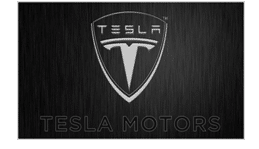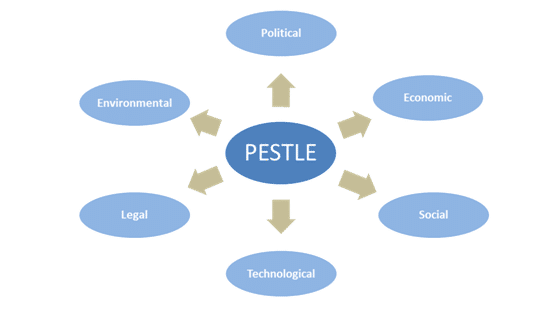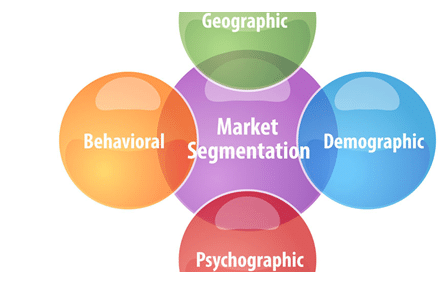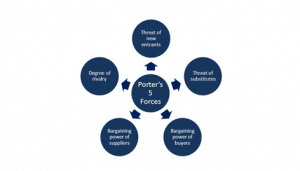MARKET SEGMENTS AND DECISION MAKING
1) TESLA, INC. Inc. Industry background and evaluation on current trends in growth, profitability and macro environment:
a) Automobile industry background:
In the contemporary world automobile industry is playing an important role in the world economy. Tesla, Inc. Inc. has emerged as an innovative product manufacturer among others which created brand recognition (Borko, 2015).
It is one of the most competitive industries in the world due to the presence of well recognized brand image companies. Tesla, Inc. contests in a tough competition from companies including General Motors, BMW and Honda among others.

Figure 1) Tesla, Inc.
The automobile industry is said to hit sales of approximately 80 million vehicles in the year 2017 (Bouyssou, 2015). Here the most potential countries for automobile markets in the world are China and the US.
These countries are prominent in production as well as sales of automobile products. The sales of passenger cars are estimated to grow 9.24% in the financial year 2017-18. There is huge demand for innovative passenger car vehicles which are eco-friendly (Bae, 2013).
Thus companies are striving towards meeting the customer preferences through innovation such as Hybrid and eco-friendly vehicles. The global sales of cars are expected to grow by 100 million by 2020. In 2014 a survey conducted on the 24% customers has responded that they are most likely to purchase autonomous cars (Claycamp, 2013).
The profitability of passenger car makers has been dropped due to the availability of used cars in market (Levinson, 2016). As per one of the survey conducted by JD power the owners of passenger cars leases has expired in 2016 by this has been increased by 33% in comparison to 2015 statistics. The automobile company will be having the revenue generation capability of $40 billion by the end of 2030 (Campbell, 2016).

Figure 2) PESTLE analysis
Political:
The political factors play a prominent role in the profitability of passenger car industry. Thus governments across the world are being laying policies for eco-friendly cars (Bouyssou, 2015). Some of the government such as European Union and the UK are being offering subsidy for environmental friendly vehicles such as Tesla, Inc. offerings which are accordingly. Therefore eco-friendly vehicles are being in huge demand by the customers across the globe (Campbell, 2016).
Economic:
The recession in recent time has drastically impacted the firms stand in the automobile industry. It the economic factors are not favorable to the customers their purchasing power decreased thus have a low demand for luxury passenger cars produced by Tesla, Inc. (Rossiter, 2015). The purchase of vehicles is high in developed nations.
Social:
In automobile market firms are continuously making changes to the models they are releasing into the market. According to socio-cultural values preferences change for the style and features of passenger cars (Müller, 2015).
Technology:
In recent times technology and innovation in the passenger cars is acting as a driving forces for the firms’ growth. Tesla, Inc. has even released autonomous cars into the market. There is an increase in entry of technologically advanced companies into this industry (Borko, 2015).
Legal:
The legal factors play prominent role in profitability and market share in passenger car industry. Therefore sales of vehicles are based upon legal conditions in any country (Levinson, 2016). For enhancement in passenger safety governments has released certain laws.
Environment:
Due to increase in pollution there are stringent laws observed by various countries such as the UK and Japan among others (Claycamp, 2013). This led to the agreement of companies to manufacture eco-friendly products.
2) Identification of major market segments for Tesla, Inc. to identifying primary and secondary target markets.
The major types of segments for the company Tesla, Inc. include demographic, psychographic and behavioral segmentation. Company is being operating in a passenger car industry by serving customers through luxury and executive cars (Weinstein, 2013).
These modes of car are basically depended upon the above said segmentation. Therefore in demographic segmentation for Tesla, Inc. is considerably depended upon income levels and age. Form the past decade the income levels of customer’s in passenger cars industry has been increased (Campbell, 2016). This increased purchasing power of customers in luxury and executive cars.

Figure 3) Market Segments
This gives potential to Tesla, Inc. in offering luxury and executive level of cars. The age group being more of youngsters in most of the countries such as India and Australia has increased the potential of offering niche market cars (Rieke, 2014).
Thus customers are willing to purchase such niche market vehicles have increased in these countries. Psychographic segmentation is another most important form of passenger car segment which will stimulate Tesla, Inc. to offer niche products (Bouyssou, 2015).
Due to the technological advent customers deliberately prefer niche and high end passenger cars that could suit their needs and wants. Moreover technology has changed the psychology of customer though being very convenient and easy to drive such as auto driving capabilities (Bhushan, 2014).
The life style of customers is also being vital aspect in segmentation which will determine the preference of customers. Due to the increased income levels and want of luxury modes of passenger cars gives Tesla, Inc. an opportunity for offering luxury products (Rossiter, 2015).
Behavior is another form of passenger car segmentation this includes the customer preference upon functionality and compatibility with their needs (Bhushan, 2014). Here the customers will prefer basic functions such as safety, environmental friendly and number of passenger capacity in a passenger car.
Therefore Tesla, Inc. could offer passenger car that could be safe at extreme conditions of driving the vehicle. Functionality of being eco-friendly nature is highly preferred by customer in current market conditions to decrease pollution (Bonoma, 2014).

Figure 5) Target Market
Primary target market:
The primary target market of Tesla, Inc. could be high income level customers who could afford luxury and eco-friendly passenger cars. The customer would be found in developed countries such as European, North American and Australian continents (Walter, 2013). These countries would be having high income level customers who would be having good purchasing power of such luxury passenger cars.
Secondary target market:
Secondary target market consists of customer that include middle aged customers who will be having purchasing power of luxury and willing to have safe and environmental friendly passenger cars (Borko, 2015). These types of target market customers could also be found in developed and developing countries including India and China.
3) Discuss the level of involvement your primary segment is likely to have towards your organization in terms of the decision making.

Figure 6) Decision Making
The customers of Tesla, Inc. are being positioned strategically for obtaining high customer acquisition. Thus primary segment of the organization has been considered as high income group customers who can afford to own these passenger cars (Bhushan, 2014).
As the customers according to the region, culture and lifestyle do have certain preferences for products that are needed. As the countries across the world has enforced laws for eco-friendly passenger vehicles. There is a need to consider the primary segment customers’ requirements to fulfill them (Borko, 2015).This would impact the organizations performance in automobile industry through consideration of primary segment characteristics.
The level of involvement of primary segment customers in the Tesla, Inc. decision making would be limited to obtain inputs of customer requirements in electric cars specifications (Bhushan, 2014). Thus at most care must be taken by the organization while offering passenger cars to the primary segment customers. Sales volume will be significantly depended upon those primary segment customers who are willing to fulfill their needs and wants (Rossiter, 2015).
Therefore Tesla, Inc. would initiate survey on customer’s preference in the primary segment of market to gain inputs in its offerings. The customer of primary segment will perceive the offerings in various dimensions such as (Rieke, 2014).
The performance of the passenger cars is observed by primary segment customers for its expected level of performance which is promised by the company (Walter, 2013).
Physical risk arises out of environmental conditions or unexpected accidents which lead to damage of vehicle as well as passenger (Rieke, 2014). Social risk would also be a major factor in primary segment contribution in decision making where customers would think passenger car as status symbol.
Financial risk is yet another mode of element in customer decision making considered by organization (Claycamp, 2013). This includes whether the product do not consume financial challenge which arise due to usage and high maintenance charges.
Psychological risk is a critical factor in involvement of primary segment customer in organizational decision making (Müller, 2015). Because the customer of primary segment will be having varied psychology in terms of color, style, functionality and usage.
These factors will definitely increase the sales volume of passenger cars of Tesla, Inc. in niche market (Rossiter, 2015). In-order to increase the sales volume and generate profits organization must these factors in decision making.If company targets its offerings to non-potential customers not willing to purchase such offerings there is a potential risk of resource wastage and losses (Rossiter, 2015).
TheTesla, Inc.would generate significant revenue and profits through the considerations of characteristic features of primary segment.
In developed countries there is a high literacy rate which will increase the customers understanding and preference of such offerings (Bouyssou, 2015).
Customers of this kind have high perception on niche market offerings which impacts the organizational performance. The primary segment will be having higher decision making capability when there is a research conducted on them (Campbell, 2016).
This gives a clear idea what Tesla, Inc. primary segment is willing to won and admire. It will also increase the organizations strategic decision making capability through comprehension of such influencing factors.
4) Nature of competition in automobile passenger car industry. Analyzingcompanies stand in market by comparing and contrasting its strengths and weaknesses to your main competitor.
a) Nature of competition in automobile industry through Porters five force model:

Figure 7) Porters five force model
Threat of new entry: Less
The passenger car industry has less threat of new entry due to huge capital investment. As the existing automakers have a higher strong foothold in this industry due to their presence since long time (Campbell, 2016).
Moreover the technological demand in the passenger car features have also been increased which would suffice customer wants and needs. The core competitors to Tesla, Inc. could be technologically advanced companies such as Google and IBM among others who could enter into this market with little efforts (Bonoma, 2014).
Threat of Rivalry: Moderate
The passenger car market has been dominated by top ten players of automobile manufacturers. This includes Benz, BMW and Toyota which occupies 70% of passenger car market share. Tesla, Inc. is a pioneer in electric car manufacturer through technological advancement (Weinstein, 2013). This has decreased the impact of rivalry upon the organization Tesla, Inc.
Threat of substitutes: High
The competitor companies such as Honda and General motors has been offering substitute products which could suffice the requirements of customers across the world. The major impact is due to advanced technology which is creating innovative offerings to the customers within their income levels (Levinson, 2016). Thus substitute products threat is high in this industry.
Threat of supplier: Less
The supplier threat to Tesla, Inc. is less due to the availability of wide range of suppliers in the automobile industry. The firm usually goes for the passenger car parts manufacturers who are high end and do not have any other purchasers thus it remains less (Rieke, 2014).
Bargaining power of customers: Less
Tesla, Inc. offers electric concept cars that are hugely in demand by the customers to avail benefits such as subsidy and comply with government regulations. Thus the firm has not been facing less bargaining power by customers (Weinstein, 2013).
b) Tesla, Inc. market place by comparing and contrast in between strengths and weakness of main competitors.
Tesla, Inc. being mainly operating in electric passenger cars through this firm has made significant brand recognition and market share (Borko, 2015). Thus company’s core competitors are General motors and Honda who are furiously entering into the electric car market as well.

Figure 8) Strengths and Weakness
Strengths:
- Tesla, Inc. has joint ventured with Toyota and General motors automakers which are lacking suchofferings.
- Tesla, Inc.has strong market position and eco-friendly vehicle production capability thus competing with General Motors.(Bae, 2013).
- Honda has strong brand recognition for engine manufacturing rather than passenger cars being competing with Tesla, Inc.
- Its product portfolio is of wide range for Tesla, Inc. and only operates in electric vehicles and energy systems which lacked by Honda and General Motors(Borko, 2015).
Weakness:
- Tesla, Inc.is mostly depended upon the US market for revenue generation similar to Tesla, Inc.
- The firm is mostly depended on passenger care vehicles rather than other vehicle which is adisadvantage to Tesla, Inc. and its competitors Honda and General motors are offering(Rossiter, 2015).
- The companies’ core business revenue is generated in the US and is competing with General motors and Honda.
- Honda has high capital investment in various offerings rather Tesla, Inc. invests only in car market(Bhushan, 2014).
5) Taking into consideration the primary segment, their level of involvement and the competition, creating a positioning map for the market place.
Tesla, Inc. is offering luxury passenger cars to the high income group people who could afford for purchasing of such offerings. Thus its primary segment of customers remains high income level group of customers which is mostly found in developed countries including the US, Australia and the UK among others (Bhushan, 2014).
This has created a huge competition in offering electric cars by its competitor companies including Honda and General Motors. In the current market of electric passenger cars there are low availability of such offerings made by its competitor companies (Walter, 2013). Customers across the world are preferably demanding for environmental friendly passenger cars.
As the competitor firms that are involved in this market segment are less which gave competitive advantage for Tesla, Inc. in automobile industry (Rieke, 2014). The core difference of the passenger car offerings made by the company lies in electricity consumption without the usage of biofuels.
The governments across the world had enforced laws for environmental friendly and safe driving passenger cars (Bonoma, 2014). This had being creating a higher steep demand for such vehicles. The eco-friendly nature of Tesla, Inc. product offerings has reduced pollution to a major extent which has been admired by many (Levinson, 2016). Organizations competitors are even furiously trying to enter into the automobile market with substitute offerings.
These offerings include hybrid passenger cars by competitor companies including Honda and General Motors. These are also playing vital role in this market segment of environmental friendly and luxury passenger cars (Claycamp, 2013).
But due to the existence of high prices of these passenger cars the firm has significantly positioned primarily to the target market of its product segment which has immensely increased sales of vehicles. In the US market of passenger cars Tesla, Inc. has predominately preferred by customers who are willing to purchase electric cars (Weinstein, 2013). The offerings of electric vehicles by the firm have of high quality and with zero emission of CO2 in the environment.
The passenger electric cars that are positioned to the high income group’s customers has differentiated it in terms of lifestyle and living standards (Bhushan, 2014). Therefore currently Tesla, Inc. has targeted to the customers in developed countries due to the high availability of disposable income (Bouyssou, 2015).
The firm has positioned its offerings to the customers as zero oil usage with high end quality and comfort to customers. This completion is less due to the existing passenger car manufacturers is mostly depended upon internal combustion engines which generate huge revenue (Levinson, 2016). It this competitor company’s start offering such high end vehicles to customers who are circumspect would lead to heavy losses.
Bae, K.-h. (2013). Market Segmentation and Time Variation in the Price of Risk: Evidence on the Korean Stock Market (Fourth ed.). Asia-Pacific Financial & Forecasting Research Centre.
Bhushan, N. (2014). Strategic Decision Making: Applying the Analytic Hierarchy Process (Fourth ed.). Springer Science & Business Media.
Bonoma, T. V. (2014). Industrial market segmentation: a nested approach (Third ed.). Marketing Science Institute.
Borko, H. (2015). The decision-making process: experimental findings and implications (Third ed.). System Development Corp.
Bouyssou, D. (2015). Decision Making Process: Concepts and Methods (Second ed.). John Wiley & Sons.
Campbell, P. (2016). Pestle Analysis in a Day (Fifth ed.). CreateSpace Independent Publishing.
Claycamp, H. J. (2013). A new approach to market segmentation, Issue 104 (Third ed.). Graduate School of Business.
Levinson, K. (2016). Power structure and decision making process: a case study of multinational corporations in the Swedish flat glass industry (Second ed.). Swedish Centre for Working Life.
Müller, R. (2015). Decision Making Process (Fifth ed.). GRIN Verlag.
Rieke, R. D. (2014). Argumentation and the Decision Making Process (Third ed.). Scott, Foresman,.
Rossiter, J. R. (2015). Market Segmentation: An Overview of Alternative Bases for Segmentation (Second ed.). New South Wales Institute of Technology.
Walter, D. (2013). The Four-Step Decision Making Process as a simple way to arrive at rational decisions (Second ed.). GRIN Verlag.
Weinstein, A. (2013). Lifestyle Market Segmentation (First ed.). Routledge.


